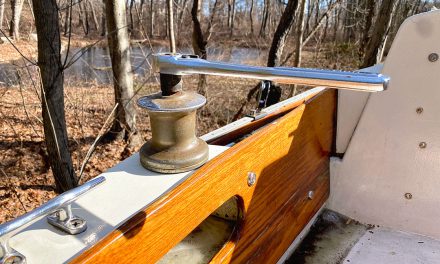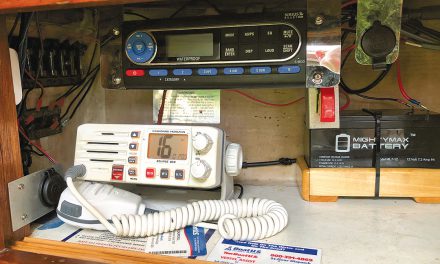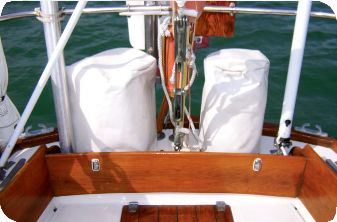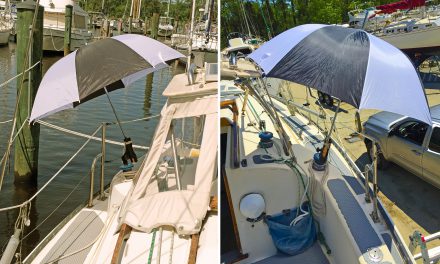Notes and Lessons
We won’t know how well KiwiGrip holds up in use for a few years. According to the manufacturer’s guidelines, weekend sailors can expect the product to last approximately 10 years before it needs renewing, although heavy-traffic areas may need to be recoated after about five years. Our boat gets a lot of use during the sailing season and we are active on-deck sailors, so this will be a good test of the product’s longevity. Maintenance is simple because KiwiGrip is stain-resistant and cleans up with a soft brush, water, and some soap.
There’s not much we would do differently when we continue our non-skid renewal project in the spring, but we agreed to keep a few things in mind:
• KiwiGrip is not magic. As with almost all paint applications, surface prep is the key. All surfaces will require thorough cleaning and many will have to be sanded. • KiwiGrip provides a surface with a uniform finish over areas of differing texture. Sections of factory non-skid that have been repaired and no longer match the existing non-skid will blend in easily with the adjacent surfaces. • While the product can be applied in temperatures ranging from 50 to 90 degrees F, the ideal temperature for application is in the 60- to 70-degree range. Cooler temperatures allow more time to fine tune the application technique. In general, hot surface temperatures are not good for the application of most paints, especially acrylics. • The rollers can be cut for use in smaller areas. Rollers cost about $11 for the 3-inch size, and $18 for the 9-inch size. I bought one 9-inch roller and cut it into 3- and 6-inch rollers. These were suitable for just about everything I encountered. • Once the KiwiGrip has cured, any areas where the stipple pattern is too pronounced may be lightly sanded for less aggressive non-skid. Conversely, rolling the paint after it gets a little tacky will increase stipple on those areas where a grippier surface is desirable. If the initial surface is not grippy enough, a second coat may be applied after it has cured for about four hours. The second coat may be thinner than the original. • Clean up spills before the paint dries, since it also sticks very well to unintended surfaces! When rolling close to adjacent vertical surfaces, remember that the roller can cause fine spray that you may not see at first but will feel later when you run your hand over the area. If the roller spray has time to set up, it will have to be scrubbed off or removed with rubbing compound. • To preserve any unused portion of KiwiGrip for future use, transfer it to smaller containers — cans or jars — that can be filled completely to eliminate air. • Thoroughly rinse rollers and brushes before the paint has a chance to dry; once the product sets up on the bristles or in the nap of the roller, it’s hard to remove. If you have to coat a large area at one time, it’s worthwhile to keep an extra roller on hand so you can immerse one in water if the paint begins to dry. • The new non-skid surface can be walked on without shoes after about 24 hours, and in soft-sole shoes after about two days. The product continues to cure over several weeks.
One benefit of KiwiGrip is that it is water-borne, which eliminates the need for harsh solvents. That doesn’t mean you can flush everything unused down the drain. Even rinse water contains solids that should be allowed to settle out and be properly disposed of. If thinning is required, it can be done with small amounts of water. There is very little odor.
This is a supplement to the article printed in Good Old Boat magazine, January 2011.





